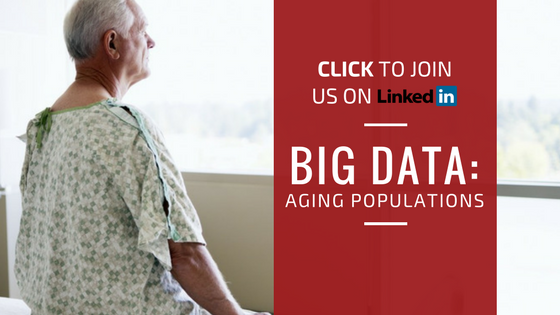There are many challenges social services organizations face when dealing with data. Here are five of their biggest concerns - plus how to solve them.
New technology is extremely powerful, and all types of organizations and companies have access to huge amounts of data. However, simply having lots of data isn’t enough; organizations also need to have a way to get real insights from it. If this can be done, data can be used to help us solve a wide range of problems. One particular area that has a lot of potential gain from Big Data is social services.
Data-driven insights can go a long way to improving quality of life for people at risk. Social services generally have access to personal data about individuals that can help them understand a person’s economic circumstances and evaluate which type of assistance they need.
But social services are often overwhelmed, leaving them unable to assist all but the most urgent cases.

That’s how Meritxell Benedí, the Director of Strategic Projects for the Department of Social Welfare and Families for the Government of Catalonia, opened up the round table discussions at the “Big Data Saves Lives” event, organized jointly by Bismart and Microsoft in June. Lack of resources is just one of the problems that social services is currently facing, but there are many more.
Representatives from local and regional social services, utilities companies, and government offices came together to discuss the current state of social services, as well as how Big Data solutions can help improve people’s lives.
Based on the conversations at the event, it’s clear that there are some similar challenges that all players in this sector are facing. These are the 5 main challenges social services face when dealing with Big Data - and how we can work together to solve them.
1. Data isn’t standardized
Just about all companies use data today, so a shortage of data available may not be a problem. What can be problematic is that each organization uses its own database. That means data doesn’t always match up from one organization to the next.
Let’s take georeferenced data for example - that is, street names and addresses. These are often not standardized across organizations, and addresses may be listed multiple different ways. The result is that it can be hard for social services to know how to contact individuals.
Lluís Torrens, the Director for Planning and Innovation for the Department of Social Benefits for the Barcelona City Council, made it clear at the event that we need to find a standard method for collecting data in order to correctly identify people at risk. Pilar Rodríguez, the deputy Assistant for the Association for Well-Being and Development, echoed his statement, adding that data is only useful if we know what it says.
It’s crucial to establish a standard method to collect data so it can be understood across organizations.
2. Organizations don’t always have all the data they need
In addition to working with different databases, organizations often work with incomplete databases. In order for social services to act effectively, they need to work with data from both the people in need and other administrative bodies. If they don’t have access to this data, it’s impossible to identify the cases that need help.
Organizations need to specify which data they need, as well as how they plan on obtaining this data. If people are willing to provide their data to organizations, this can simplify things. That’s why it’s important for organizations to be transparent about what data they need individuals provide. They should also make it clear how this is going to help these people.
3. Data isn’t always shared when it should be
We’ve already talked about how organizations work with data in non-standard ways, and how they may not always have all the data they need. Adding another layer to this complicated situation is that data isn’t always shared between organizations when it should be.
Different organizations or companies works with different data in a different way. Sometimes, it may not be clear which data needs to be shared and with who. In other cases, organizations don’t always follow guidelines for making data available.
In Spain, utilities companies are supposed to notify social services before they stop providing services due to unpaid bills. Last year, a woman in the city of Reus died in a fire that was started by the candles she was using to light her home after her electricity was cut off. Social services had not been notified.
Organizations need to define which data needs to be shared. They also need to be clear about who is responsible for sharing it to stop cases like this falling through the cracks in the system.
4. Even when the data is available, organizations don’t have the tools to understand it
Social services frequently have lots of data stored. But what they don’t have is a way to make sense of the data due to unorganized, incomprehensible databases.
That’s why they need tools that can help them make sense of their data. These tools should ideally be accessible to users at all levels, rather than just the experts.
One useful tool they can use are easy-to-understand dashboards, which pull up key findings and important data in a visual format. They can also use smart tagging systems that help them pinpoint information they need in their databases.
Our bigov Better City Indicators solution and intelligent Folksonomy software are respectively designed to help local governments and social services organizations deal with these issues.
5. Sometimes, people may refuse to provide their data
To effectively help individuals in need using data, social services need up-to-date information about them. But people may not want to provide their data.
One reason this happens is because the way data is collected often isn’t transparent.
They might not understand why it’s important to provide their data. On top of that, people often face things like lengthy terms and conditions filled with jargon.
Individuals may also have privacy concerns.
Social services organizations are under some time pressure to resolve this issue due to new regulations from the European Union. The new GDPR regulatory framework, which takes effect in 2018, will require adherence to strict new guidelines regarding data protection and privacy.
Next steps: Working together for a better future
Taking all this into account, it’s clear that there’s a lot of work ahead of us in terms of how we use Big Data to help social services work more effectively. However, during the “Big Data Saves Lives” event, experts expressed an optimistic vision of the future.
As Pilar Rodriguez said, Big Data and technology are a bridge that can help us become more efficient, improve sustainability, and guarantee basic rights for citizens.
The Bismart team is already hard at work on finding solutions to these challenges. That way, cities all over the world can ensure people receive quality social support and services.
If you’re interested in how technology can help improve people's lives, follow us on LinkedIn:




